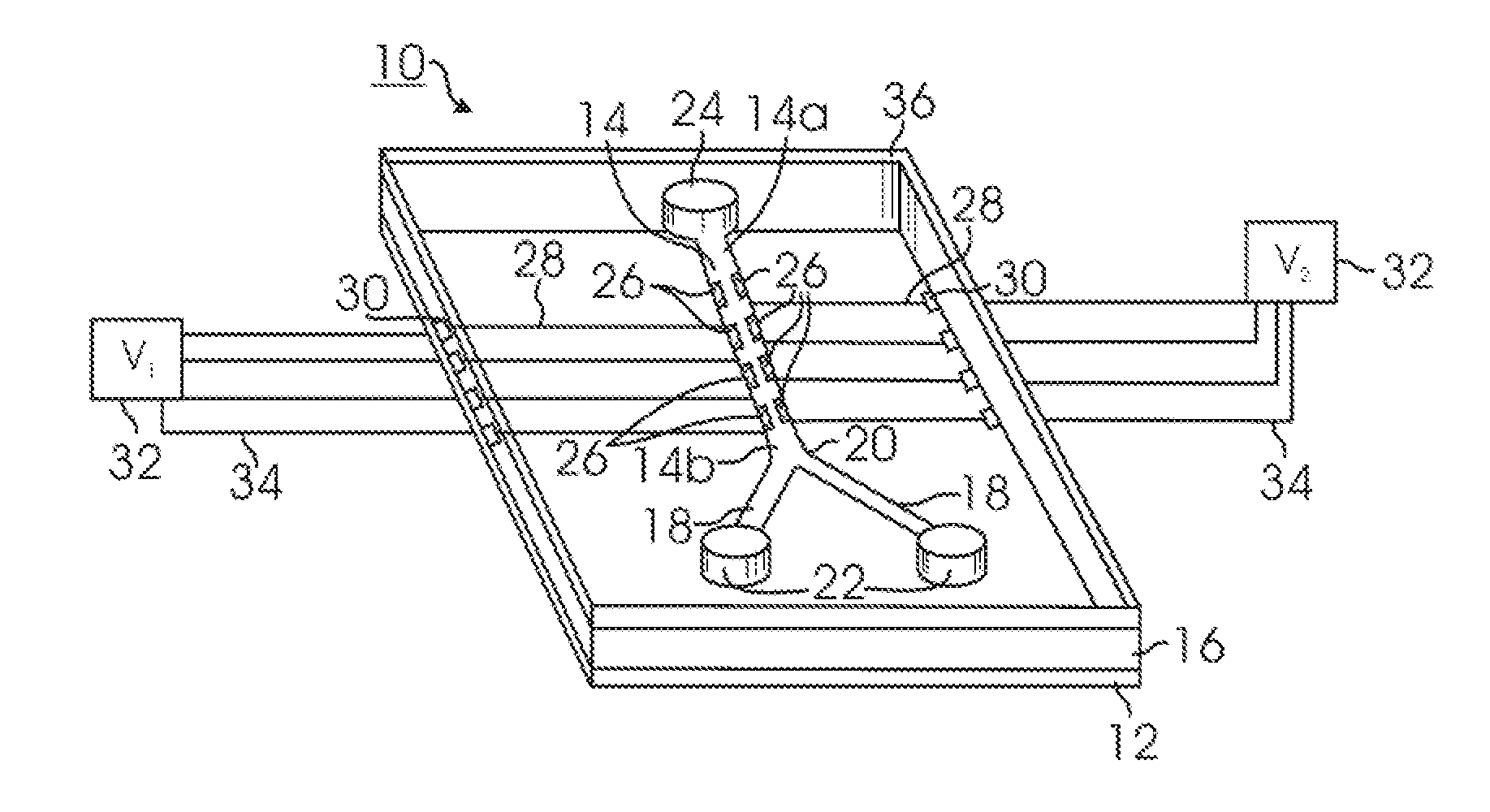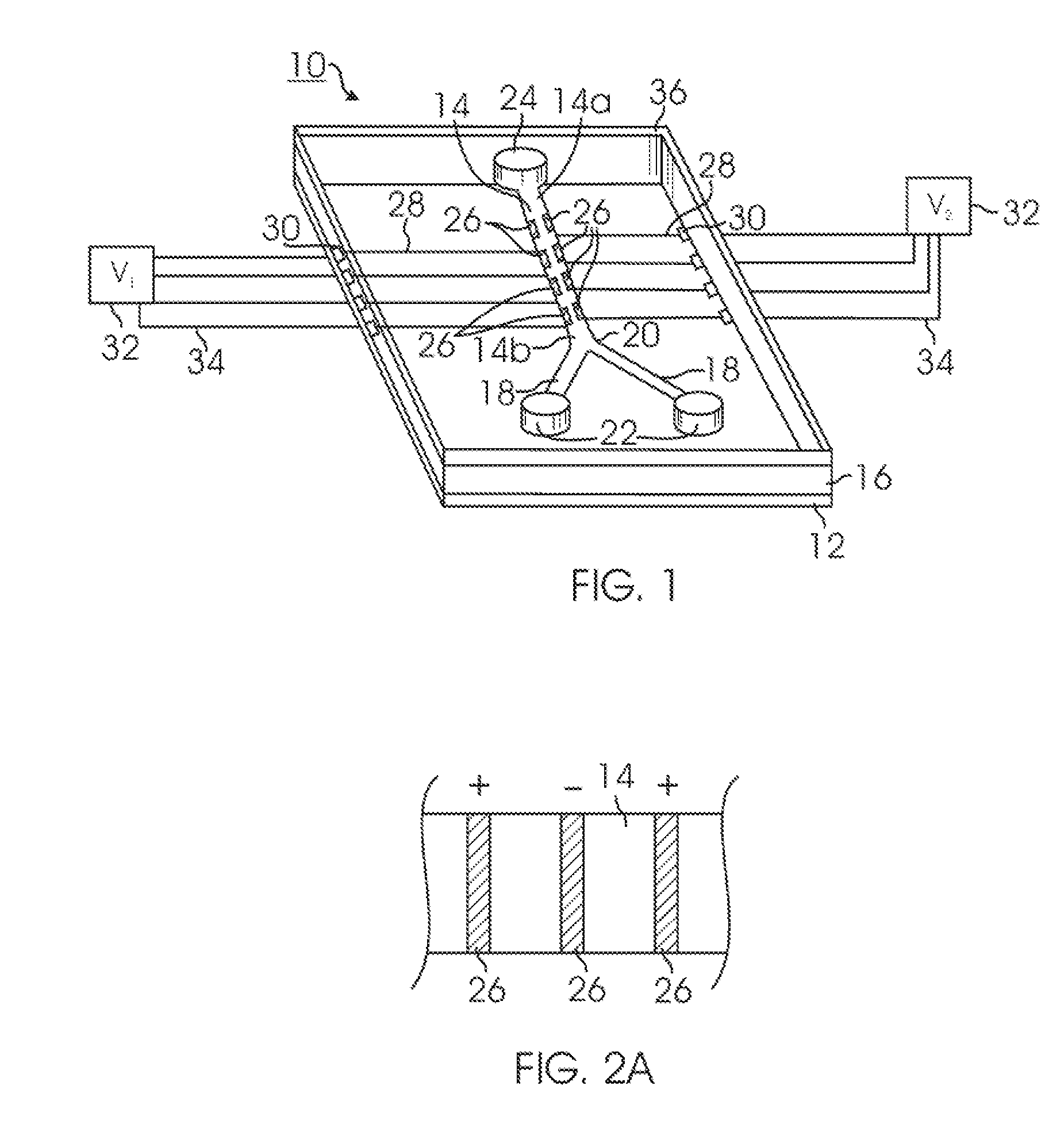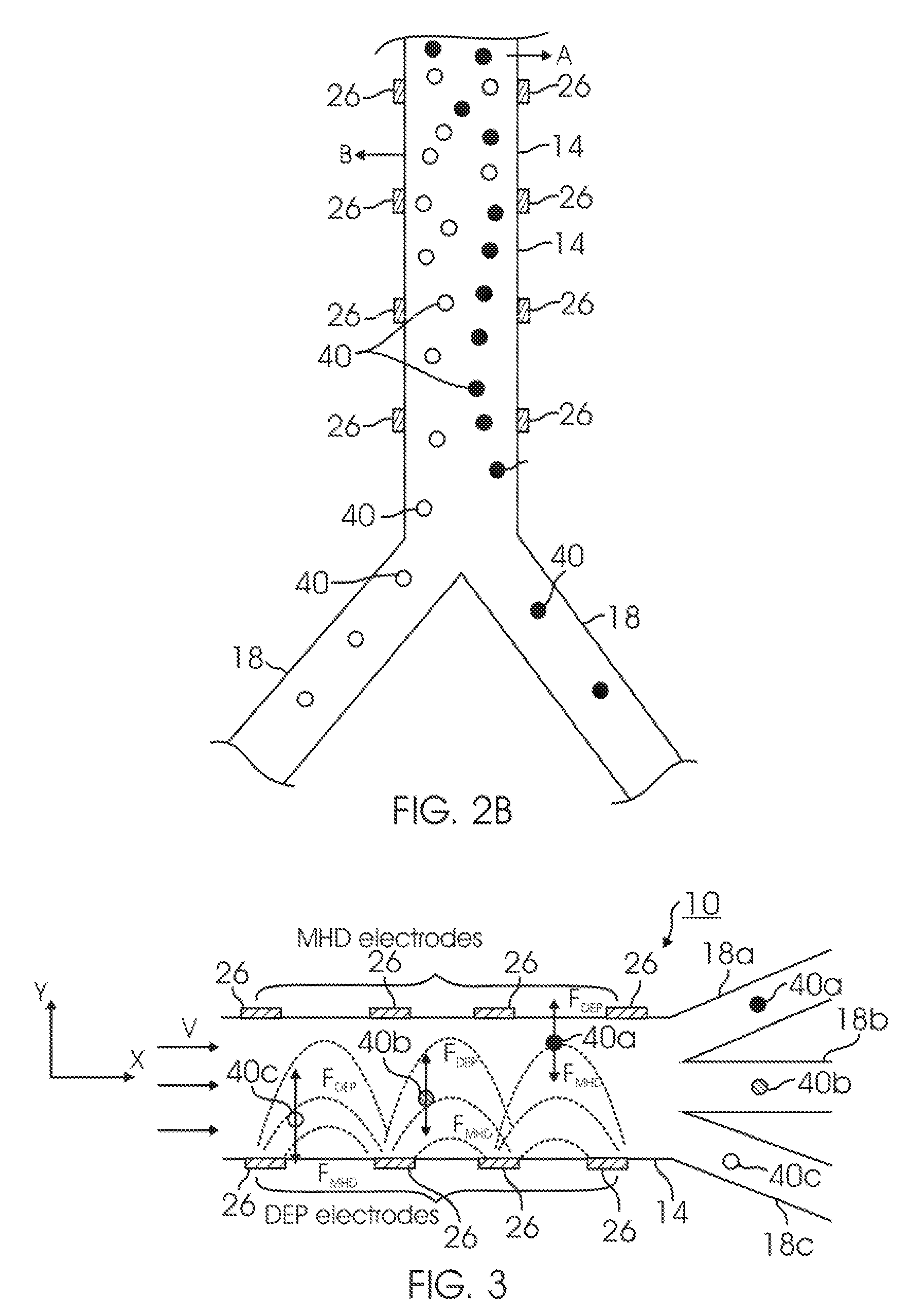Microfluidic device for cell and particle separation
a microfluidic device and particle technology, applied in electrostatic separators, diaphragms, electrolysis, etc., can solve the problems of complex valves and pumps, poor discrimination of methods, and many of the proposed sorting schemes
- Summary
- Abstract
- Description
- Claims
- Application Information
AI Technical Summary
Benefits of technology
Problems solved by technology
Method used
Image
Examples
Embodiment Construction
[0027]FIG. 1 illustrates a microfluidic device 10 according to one embodiment of the invention. The microfluidic device 10 includes a substrate 12 onto which the device 10 is formed. The substrate 12 may include a relatively inert material such as silicon, glass, polycarbonate, or a plastic-based material. The substrate 12 should be amenable to depositing the electrodes and electrical lines or traces used to drive the electrodes (discussed in more detail below).
[0028] A main or common microchannel 14 is formed in a polymer-based material 16 that overlays the substrate 12. The polymer-based material 16 may include a photoresist such as, for instance, SU-8. As seen in FIG. 1, the microchannel 14 has a length that includes an upstream region 14a, and a downstream region 14b. The terms upstream and downstream are indicative of the direction of flow of fluid and particles or cells within the microchannel 14 during operation. During operation, fluid flow (and hence flow of particles or c...
PUM
| Property | Measurement | Unit |
|---|---|---|
| voltage | aaaaa | aaaaa |
| conductivity | aaaaa | aaaaa |
| frequency | aaaaa | aaaaa |
Abstract
Description
Claims
Application Information
 Login to View More
Login to View More - R&D
- Intellectual Property
- Life Sciences
- Materials
- Tech Scout
- Unparalleled Data Quality
- Higher Quality Content
- 60% Fewer Hallucinations
Browse by: Latest US Patents, China's latest patents, Technical Efficacy Thesaurus, Application Domain, Technology Topic, Popular Technical Reports.
© 2025 PatSnap. All rights reserved.Legal|Privacy policy|Modern Slavery Act Transparency Statement|Sitemap|About US| Contact US: help@patsnap.com



